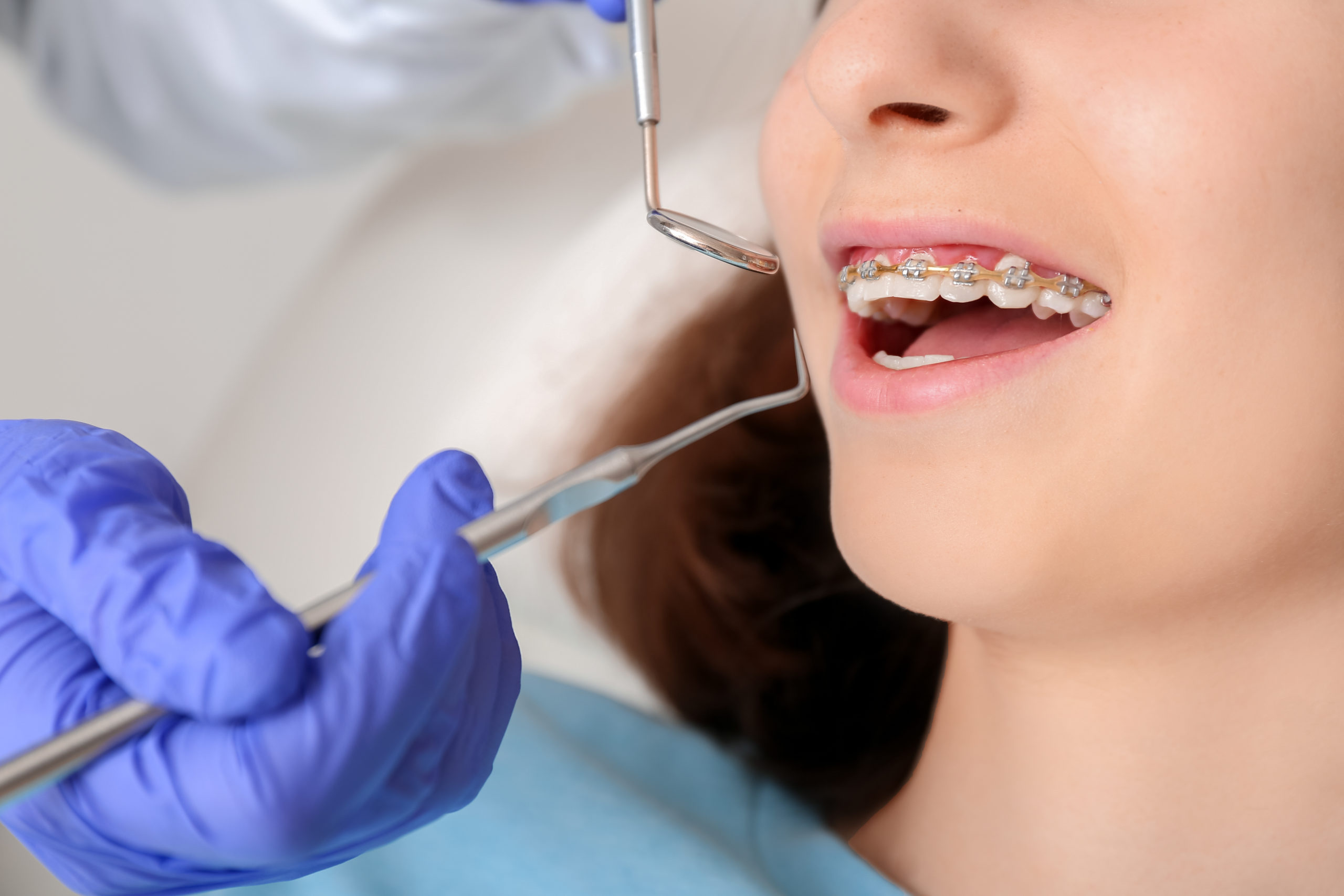Locating the Right Cumming Orthodontist for Your Braces and Aligners Requirements
Locating the Right Cumming Orthodontist for Your Braces and Aligners Requirements
Blog Article
Comprehensive Overview to Orthodontics Treatments for Dealing With Oral Misalignments
In the world of orthodontics, the journey to achieving a perfectly aligned smile includes a myriad of procedures customized to fix oral imbalances. From traditional dental braces to unseen aligners and even surgical choices, the field of orthodontics supplies a series of services to deal with varying levels of oral abnormalities. Understanding the details of each treatment, including their devices, advantages, and possible drawbacks, is critical in making notified choices concerning one's orthodontic treatment. As we browse via the comprehensive overview to orthodontic treatments for dealing with dental misalignments, the intricate information of each method will certainly unfold, shedding light on the path toward a practical and unified oral alignment.
Orthodontic Procedures Review

Normal adjustments and tracking are vital parts of orthodontic treatment to make sure development is on track and to make any essential modifications along the means. By undertaking orthodontic treatments, people can not only accomplish a straighter smile but additionally enhance their overall oral health and wellness and function.
Standard Braces: How They Work
When taking into consideration orthodontic treatments for oral imbalances, traditional dental braces stick out as a reliable approach for dealing with teeth positioning. Conventional dental braces include braces, wires, and bands that interact to use continual stress on the teeth, gradually moving them right into the desired placement. The braces are affixed to the teeth using a special adhesive, and the cords are threaded with the braces. By adjusting the stress of the cables, orthodontists can regulate the instructions and pressure used to each tooth, directing them into correct positioning in time.
As stress is applied to the teeth with the dental braces, the bone bordering the teeth is reshaped to support the brand-new tooth positions. Clients will need routine adjustments at the orthodontist's office to ensure the braces proceed to use the appropriate stress for reliable teeth movement.
Invisible Aligners: Advantages And Disadvantages
These clear, custom-made trays are essentially undetectable when worn, making them an attractive alternative for individuals seeking a much more aesthetically pleasing orthodontic treatment. Individuals can get rid of the aligners prior to eating or brushing their teeth, minimizing the threat of food obtaining stuck in the home appliance and streamlining the cleaning procedure.

Surgical Orthodontic Options
Surgical interventions in orthodontics existing sensible options for dealing with complicated oral misalignments that may not be effectively settled through conventional orthodontic treatments. While invisible aligners and standard dental braces can fix lots of orthodontic problems, particular situations require surgical Read Full Article intervention to attain ideal results. Surgical orthodontic options are generally advised for extreme malocclusions, significant jaw disparities, and instances where the underlying bone structure needs alteration to achieve correct placement.
One usual medical orthodontic procedure is orthognathic surgical treatment, which entails rearranging the jaws to deal with useful problems such as trouble speaking or eating. This surgery is typically executed in cooperation with an orthodontist that helps straighten the teeth prior to and after the procedure. Surgical orthodontics might also include procedures to expose impacted teeth, get rid of excess gum cells, or reshape the jawbone to develop a more unified face profile.
Before taking into consideration medical orthodontic options, clients undergo a thorough evaluation to identify the necessity and prospective advantages of such interventions. aligners. While surgical procedure may appear overwhelming, it can substantially boost both the function and appearances of the smile in instances where conventional orthodontic treatments drop short
Retainers and Post-Treatment Treatment

Failure to comply with post-treatment care instructions can result in regression, where the teeth progressively relocate back in the direction of their initial settings. Constant retainer wear, great oral hygiene, and normal oral exams are necessary for keeping the outcomes accomplished through orthodontic surgery and ensuring the lasting security of the remedied dental alignment.
Conclusion
In conclusion, orthodontic treatments offer numerous alternatives for dealing with dental imbalances. Surgical orthodontic choices are readily available for a lot more extreme misalignments. On the whole, orthodontic procedures can properly improve oral health and visual look.
As we navigate with the comprehensive overview to orthodontic treatments for fixing oral imbalances, the elaborate information of each method will unravel, shedding light on the path towards a practical and unified dental positioning. - braces
One of the most typical orthodontic therapies is the use of braces, which consist of steel braces and wires that apply gentle stress to progressively shift teeth into the preferred setting.When taking into consideration orthodontic treatments for dental misalignments, standard dental braces stand out as a reliable method for fixing teeth positioning. Furthermore, unseen aligners might not be ideal for complex orthodontic issues that require more considerable teeth motion, as they are normally advised for light to modest instances. Retainers are custom-made orthodontic devices designed to hold teeth in their fixed positions after the completion of orthodontic treatment.
Report this page